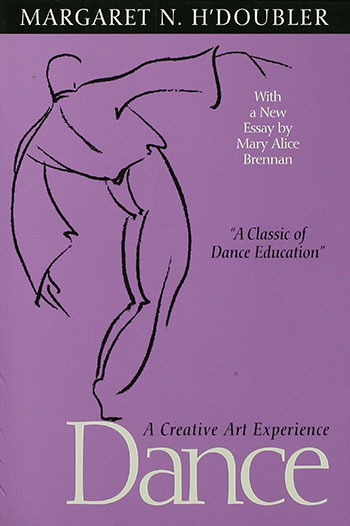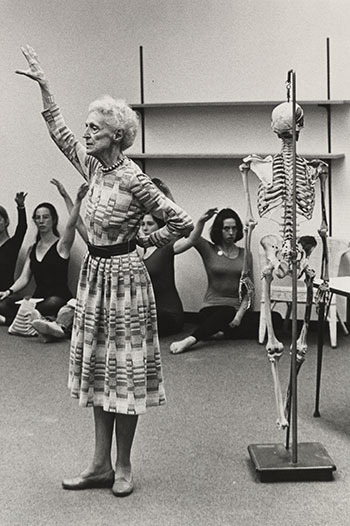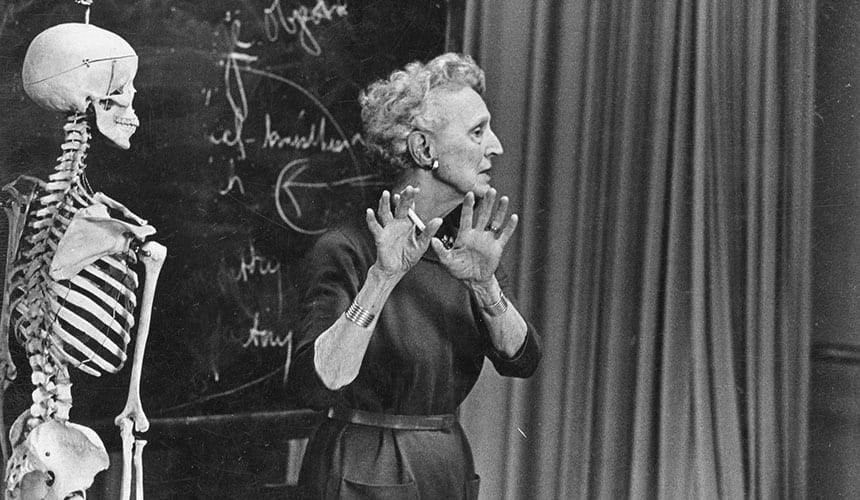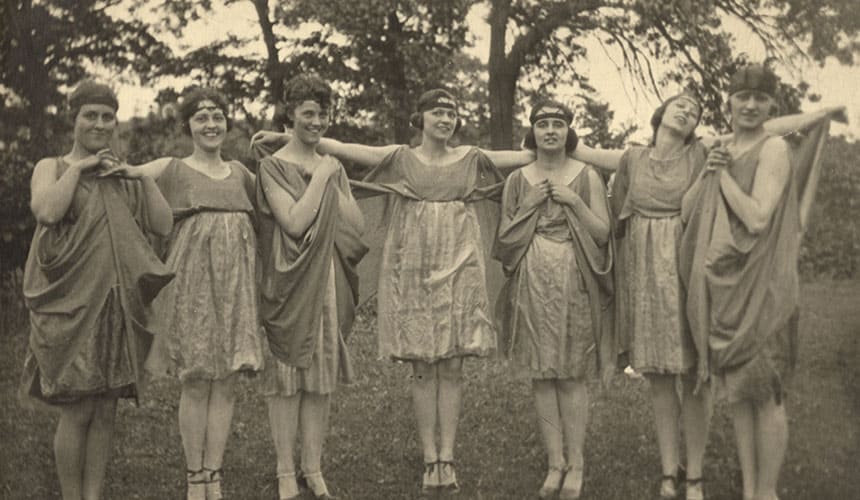Margaret H’Doubler
Trailblazing Dance Educator
Women most certainly weren’t encouraged to nurture their physical selves during the early 20th century. Moving their bodies around freely was considered scandalous — until Margaret H’Doubler BS1910, MA1924 came along, that is.

Image courtesy of UW Press.
Although she was not a dancer (other than participating in the annual May Fête on campus as an undergraduate), she revolutionized how dance was regarded in American higher education.
After earning a degree in biology, H’Doubler (pronounced Dough-blur) was hired to teach UW physical education classes. While doing graduate work for a year at Columbia University, she observed a music class for children, marveling at how lying on the floor allowed them to escape “the pull of gravity.” She returned to Wisconsin with big ideas.
A human skeleton became her go-to prop. She taught about anatomy in every class, firm in her belief that dance was both an art and a science. Students didn’t always know what to make of her methods; she often started instruction by giving them blindfolds and kneepads. “We’ll study movement as movement first. We may never arrive at dance, but we’ll make an honest beginning,” former student Ellen Moore MS1951 recalled H’Doubler saying.
Yet H’Doubler knew exactly what she wanted that beginning to achieve: an integration of body and mind. “She was awed by the complexities of the human organism and joyous in her belief that dance was uniquely suited to aid us in realizing our own potential,” wrote Mary Alice Brennan MS1967, PhD1976, a UW professor emerita of dance.
From The Park
Margaret H’Doubler combined aesthetics with the study of anatomy and gave the UW the nation’s first dance major. Her work and pedagogy encouraged students to be “physically, intellectually, and emotionally integrated.”

Image courtesy of UW Archives.
Students loved that message — so much so that other faculty members admonished H’Doubler that her students, when assigned papers, wanted to write only about dance. She helped them form Orchesis, a group that provided additional dance time out of class. When she proposed that the discipline be recognized academically, it was an easy sell. Students paved the way via world of mouth, university administrators signed on, and H’Doubler triumphantly established the country’s first dance major in 1926.
H’Doubler’s book Dance: A Creative Art Experience informed physical education for decades and continues to inspire. Chris Walker, artistic director of the UW’s First Wave Hip Hop Theater Ensemble, discovered it while growing up in Jamaica. “I picked up that book, and it changed my life,” he told the Wisconsin State Journal in 2016.
H’Doubler helped college women to challenge the confines imposed by society, and she concluded each class session by noting their accomplishments. “When we clapped for her,” Moore remembered, “she clapped for us.”
 48° F
48° F
